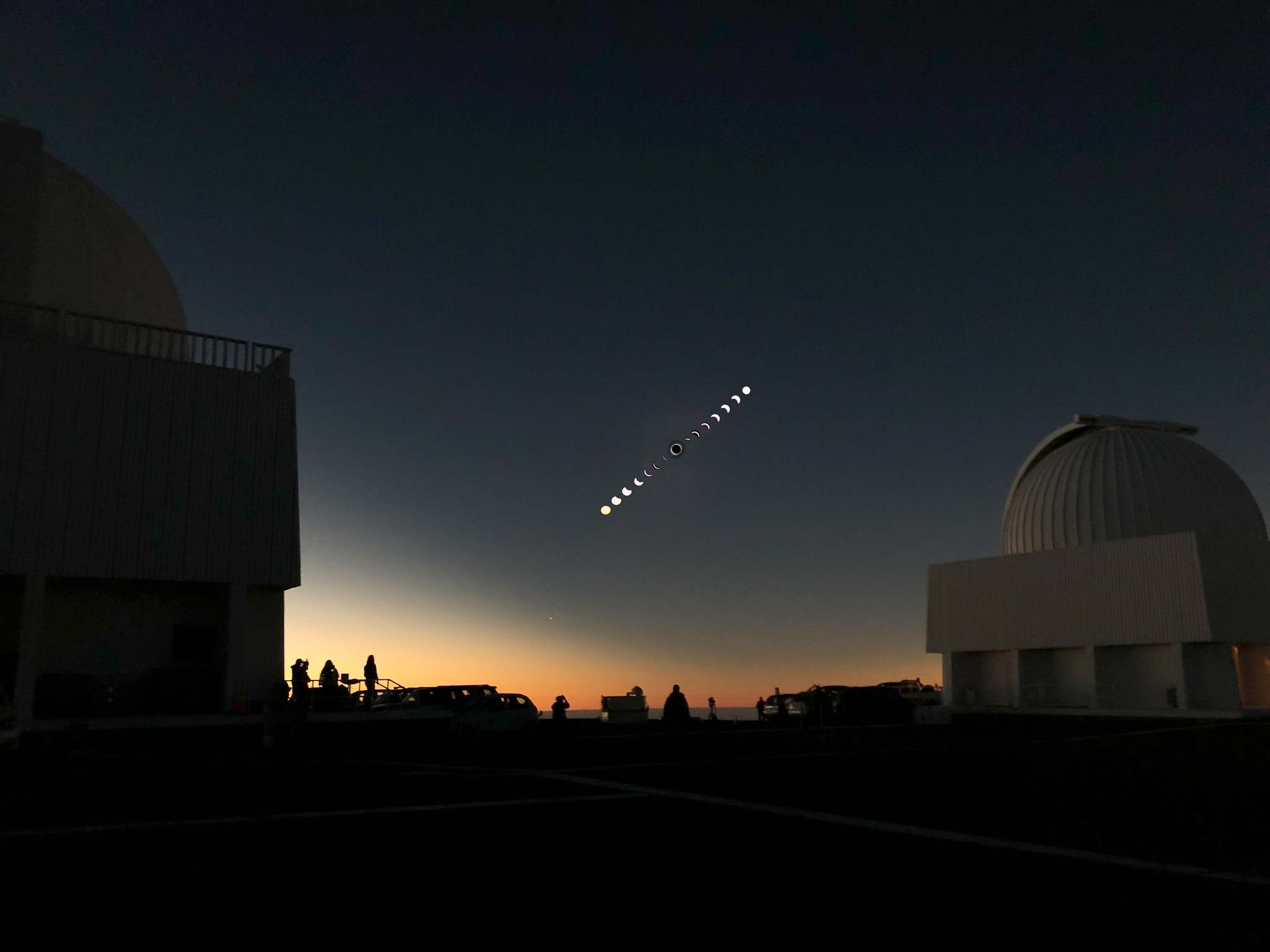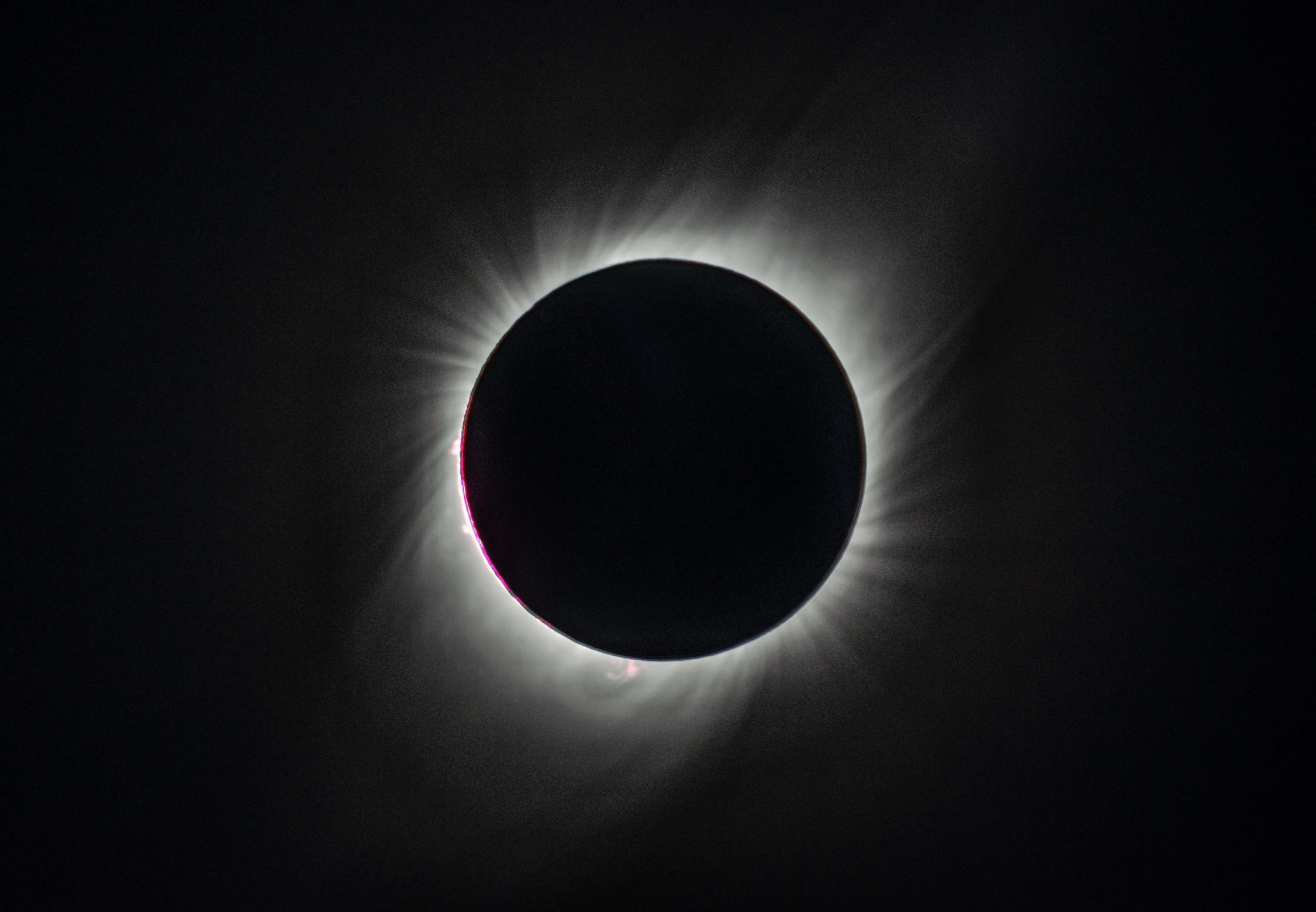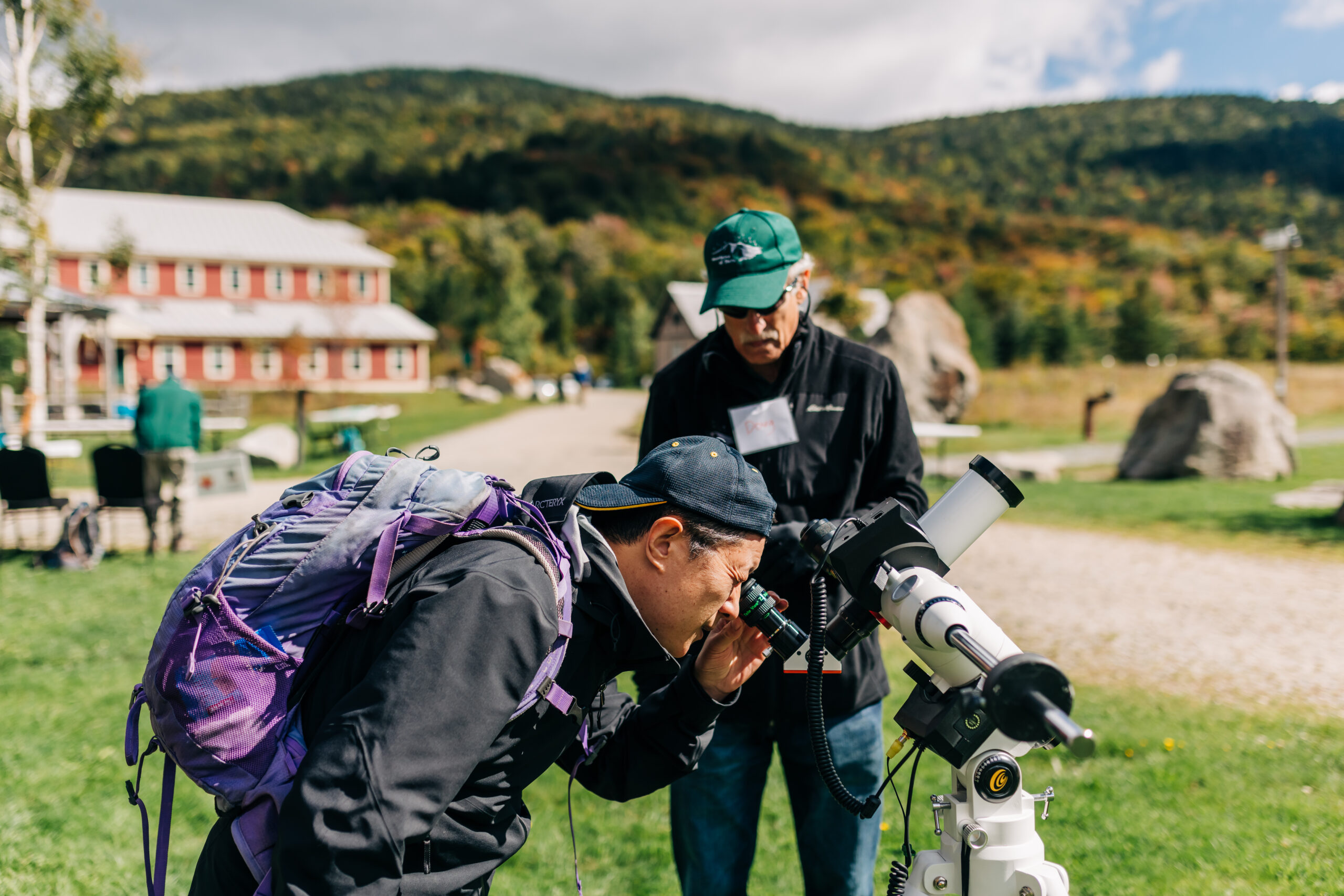

A composite image of a 2019 total solar eclipse. Photo Credit: NASA/Goddard/Rebecca Roth.
One moment, the sun is shining on a spring afternoon. The next, darkness.
On April 8, 2024, parts of AMC’s region will experience a total solar eclipse, the moment when the moon passes in front of the sun and completely blocks its light. Total solar eclipses only last for a few minutes and occur within a narrow band of space. When the opportunity arises to see one, take it.
Throughout history people have looked up during eclipses in shock, sometimes even fear. An ancient Chinese myth describes it as a dragon eating the sun. Many cultures in the ancient Mediterranean believed eclipses were a bad omen of the death of a king. While we now understand the science behind these celestial events, the awe they can inspire remains.
Want to plan a trip to see this once-in-a-lifetime event in action? AMC lodges in New Hampshire have you covered. Here’s what you need to know.
What is a Solar Eclipse?
An eclipse is when the sun and the moon line up in a way where the moon blocks the sun’s light. While the moon does a complete rotation of the earth each month, it does so on a different plane from the earth’s rotation of the sun. This means an eclipse of any kind isn’t a typical occurrence. There are four types of eclipses:
- Annular eclipse: These happen more frequently, usually every year or two. It’s typically when the moon is at the farthest point from the earth, meaning its shadow doesn’t fully conceal the sun. As a result, the moon will appear to have a bright ring around it.
- Partial eclipse: This is when the moon passes in front of the sun, but only obscures some of it. In these cases, the earth, sun, and moon have not fully lined up. The resulting visual resembles a crescent-shaped sun.
- Total eclipse: While any eclipse is worth stepping out to see, it’s the total eclipse that is the most unique spectacle. This is a special situation during which the moon is close enough to the earth and lined up in a way that totally blocks out the sun, submerging viewers in darkness and revealing the sun’s corona, a part of its atmosphere usually not visible to the human eye because of the sun’s brightness.
- Hybrid eclipse: Some places may experience an eclipse that starts annular and then becomes total. These are extremely rare.
On April 8, parts of the AMC region will experience a total eclipse.


A total solar eclipse reveals the sun’s corona. Photo Credit: NASA/Goddard/Rebecca Roth.
Where Are the Best Places to View the Eclipse?
Not everyone will be able to see the total eclipse. Because of the small shadow of the moon, total eclipses can only be seen from a narrow band of space. Viewers must be in the center of the moon’s shadow, called the path of totality. The sky may darken slightly just outside this path, but go much farther, and it’ll be just a regular day.
While total solar eclipses happen relatively often, about every year –and a half, the path of totality moves each time. It could be a very long time before there’s a total solar eclipse in the Northeast again. In fact, the gap between total eclipses occurring in the same place is usually around 400 years.
In the United States, the April 8th path begins in Texas and travels through major cities like Dallas, Indianapolis, and Cleveland on its way into the AMC region. Here’s where you can best see the eclipse in Pennsylvania, New York, Vermont, New Hampshire, and Maine:


The path of the April 8 eclipse.
Do I Need to Take Safety Precautions?
Staring at the sun, even if the sun is somewhat covered, can be damaging to your eyes. In some cases, looking at the sun without protection can cause permanent retinal damage. But what about when the sun’s light is completely obscured?
According to NASA, there is a brief window of time during the total eclipse when the moon fully blocks out the sun’s light, in which the sun is safe to view. This is the period known as totality. However, you’ll still need eye protection during the transition phases, when the moon is covering and then uncovering the sun.
To safely view an eclipse through all of its stages, use specialty eclipse glasses or a handheld solar viewer. Fortunately, both are inexpensive.


AMC Highland Center. Crawford Notch, New Hampshire.
How Can I Make the Most of An Eclipse Viewing Trip?
Because the total eclipse taking place on April 8, 2024, is such a rare occurrence, people from across the world will travel into the path of totality. Luckily, outdoor enthusiasts in the Northeast and Mid-Atlantic are just a short drive away from the chance to catch this celestial event.
AMC lodges in the White Mountains of New Hampshire will be celebrating the eclipse all weekend, from April 6 to April 9! Stay a short drive from the path of totality and enjoy fun hikes, activities, and more focused on astronomy research and dark sky conservation.
Activities will include:
- Guided hikes to local viewing locations
- Workshops to create your own solar viewfinders and build a telescope with a solar filter
- Indoor planetarium activities
- Astronomy-related films and speakers
Celestial events like the total solar eclipse are special. They bring us together for a moment to marvel at the sky. It’s a once-in-a-lifetime opportunity to literally See The Dark during the day. And it’s a reminder of the unique beauty and mystery of the natural world. How will you make the most of your day?